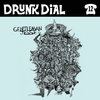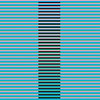Pelon by Tim Birchard with Chuck Hildner and Justin Repath
Tracklist
| 1. | media | 1:41 |
| 2. | trash | 0:38 |
| 3. | glazed | 0:45 |
| 4. | name dropper | 1:31 |
| 5. | poised | 1:44 |
| 6. | so what | 0:53 |
| 7. | p.c. | 1:10 |
| 8. | toad (written by a cyclist) | 1:26 |
| 9. | shadow | 2:13 |
| 10. | sushi dreams | 1:26 |
| 11. | i'm not happy now | 0:50 |
| 12. | dumbike | 1:22 |
| 13. | closed mind | 1:55 |
| 14. | pooch | 1:30 |
| 15. | weak | 1:59 |
| 16. | push | 2:03 |
Credits
released August 13, 2013
"This is a high fidelity recording. Pelon uses a specially constructed 24-channel tape recorder, a "State-of-the-Art" 36-input computerized-mixdown console, and some very expensive German microphones. Individual microphone equalization is frowned upon. The sound created by musicians and singers is reproduced as faithfully as possible, and special care is taken to preserve the band-width and transient response of each performance. Transfer from master tapes to master lacquers is done on a Neumann VMS 70 computerized lathe equipped with a variable pitch, variable depth helium cooled cutting head. The computer logic circuits of the VMS 70 widen and narrow the grooves on the disc in accordance with its own bizarre electronic mentation for reasons known only to its designers; this accounts for the lovely light and dark patterns that can be seen on the surface of the pressing. Vinylite compound is used. For best results observe the R.I.A.A. curve."
"This is a high fidelity recording. Pelon uses a specially constructed 24-channel tape recorder, a "State-of-the-Art" 36-input computerized-mixdown console, and some very expensive German microphones. Individual microphone equalization is frowned upon. The sound created by musicians and singers is reproduced as faithfully as possible, and special care is taken to preserve the band-width and transient response of each performance. Transfer from master tapes to master lacquers is done on a Neumann VMS 70 computerized lathe equipped with a variable pitch, variable depth helium cooled cutting head. The computer logic circuits of the VMS 70 widen and narrow the grooves on the disc in accordance with its own bizarre electronic mentation for reasons known only to its designers; this accounts for the lovely light and dark patterns that can be seen on the surface of the pressing. Vinylite compound is used. For best results observe the R.I.A.A. curve."







